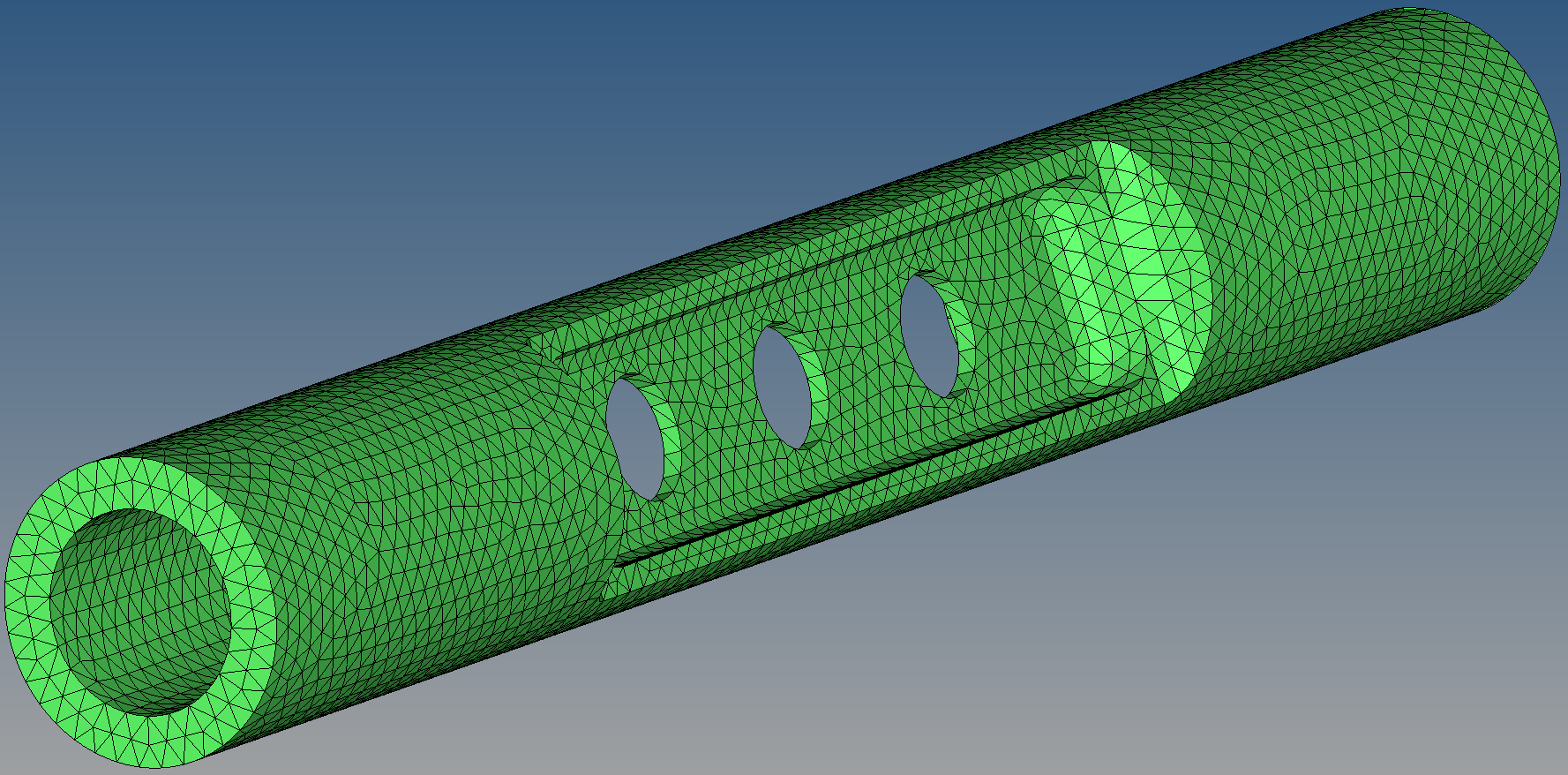Pre/Post Processing
Pre-Processing
MARS features a large variety of built-in methods for the generation of complex models. These include common shapes, such as prisms, cylinders, disks, etc, and more complex geometries, such as dogbone specimens, rebar layouts, LDPM meshes, etc.
In addition, MARS is able to read meshes generated by other pre-processors or finite element codes, such as TetGen, GiD, Abaqus, LS-Dyna, Ansys, etc. We can also extend this list to cover additional file formats upon request.
Finally, due to its list-based architecture, MARS allows seamless integration of models developed under different platforms. Detailed explanations are given in the user manual.

Post-Processing
Information data at given time steps for creating three-dimensional images of the deformed geometry including contour/fringe plots
- Time history records of relevant physical quantities
The first type of data can be viewed with two packages:
- The first package, QUASAR, is a viewer specifically developed by ES3 for viewing MARS results. The main advantage of this approach is that results can be viewed very quickly with almost no set-up required at the time of viewing.
- The second package is ParaView, an open-source, multi-platform data analysis and visualization application, freely available on many platforms.
Time histories records are saved in ASCII files and can processed using two packages (jHist and jPlot) specifically developed by ES3 for generating plots, or can be easily edited for visualization with one of the many packages that generate plot figures.
Registered customers can download QUASAR, jHist and jPlot here.
